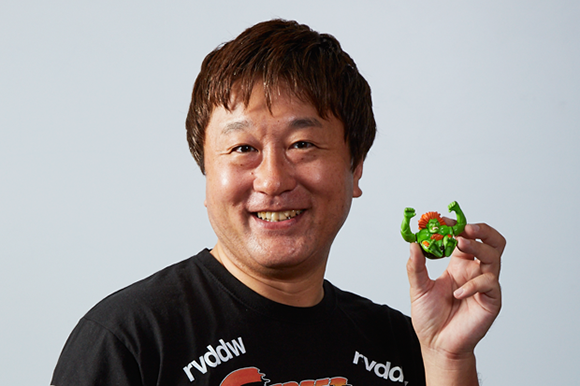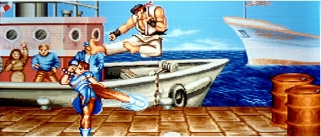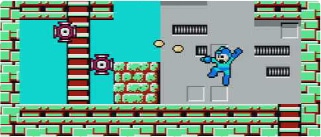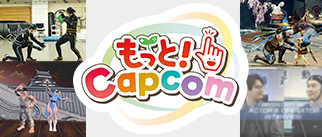Looking back on 21 years of the MARVEL VS. CAPCOM series
- You’ve teamed up with Marvel in the past as well.
- We first teamed up with Marvel 21 years ago on the release of X-MEN VS. STREET FIGHTER for arcades. It was a collaboration born of both companies’ strategies aligning: Marvel wanted to continue sharing their characters with Japanese fans, and Capcom wanted to take on the global market—particularly North America.
- What was the situation like back then?
- Fighting games were taking the world by storm, starting with our very own Street Fighter series. It was around the time dubbed versions of Marvel’s animated TV shows, which had run in the U.S., began airing in Japan.
- What kind of impact did the launch of X-MEN VS. STREET FIGHTER have?
- By working with Marvel and leveraging their IP we were able to raise awareness and establish both the Capcom name and the Street Fighter brand. That game became the archetype for the MARVEL VS. CAPCOM series, and I think the fact we’ve been able to continue the series up through today is an achievement owed to the hard work put in 21 years ago.
- How did the MARVEL VS. CAPCOM series take shape after that?
- In 2008, we saw the second coming of a world-wide fighting game boom thanks to the release of Street Fighter IV, though some North American players have said that this resurgence was owed in large part to MARVEL VS. CAPCOM 2, a title launched in 2000. Nearly 10 years after this last game, Marvel requested that we collaborate again—which turned into MARVEL VS. CAPCOM 3, released six years ago in 2011.
- Marvel’s films have been enjoyed around the world for the last 10 years; was that a factor in the enthusiasm for MARVEL VS. CAPCOM 3?
- Yes, in addition to being recognized for their comic books and animated works, Marvel’s characters have been regarded as a kind of culture thanks to the release of moves like Marvel’s The Avengers and Marvel’s Guardians of the Galaxy. It was also at a time where we wanted to reestablish the MARVEL VS. CAPCOM series, and Marvel agreed.
- We’ve seen a number of other cross-over titles as well.
- Yes, we released TATSUNOKO VS. CAPCOM: ULTIMATE ALL-STARS, a collaboration with Tatsunoko Production, and STREET FIGHTER X TEKKEN, a collaboration with Bandai Namco Entertainment.
- Was the MARVEL VS. CAPCOM series in development around that time?
- We had been wanting to continue forward with the series, but it was our discussion five years earlier with Marvel that paved the way for development of MARVEL VS. CAPCOM: INFINITE.
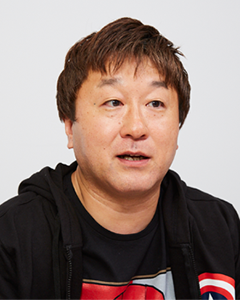
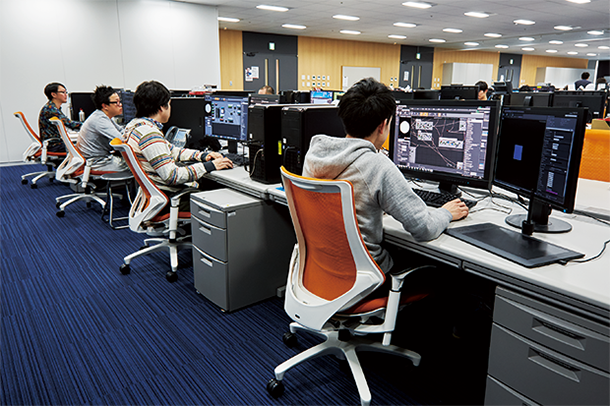
Gameplay that satisfies core players matched with a story to delight Marvel fans
- Tell us about the latest game’s name: MARVEL VS. CAPCOM: INFINITE.
- The “Infinite” in the title is quite meaningful, and has to do with Marvel’s all-important Infinity Stones.
- Why not number this title with a “4”?
- One reason is that we wanted to make the title of the game approachable for all fans. It had also been some time since the previous entry in the series, so in order to remove focus from the idea that it is a sequel, we intentionally didn’t number this title.
- Do Marvel fans exist in a different demographic or market segment from Capcom fans?
- We think there are two main segments within the MARVEL VS. CAPCOM fan base. One segment is that of Capcom fans; this includes everyone from core players to pro gamers, all who have lent their support to Street Fighter, past fighting game booms and to the thriving eSports movement of today. The other segment is that of Marvel fans; here we have a very broad target segment that goes beyond age or gender: men and women, young and old, people who might enjoy watching the films on a date night; many of them connect to Marvel’s highly relatable characters and engaging tales of good versus evil.
- It’s a real mix of different groups.
-
Yes, which is why we’ve placed a lot of emphasis on capturing the hearts of each of these two user groups with this title. On the one hand, we’ve got the gameplay, which we want to satisfy our core users. We want them to come away thinking, “I love Capcom fighting games!” On the other hand, we’ve got the story,
which we want Marvel fans to connect with. We’d like them come away thinking, “that was a challenge, but really entertaining.”
Of course, in order to get people to understand why fighting games are interesting, we need to help them better understand how to play. This time around, we’ve taken what normally tends to be a highly complex control system and overhauled it so that the time spent getting used to the play controls isn’t a chore. It’s game design that allows you to really feel good about fighting games. At the same time, we’ve put together a story mode that plays out like a movie, linking the paths of each of the different characters. Newcomers can enjoy the story while getting a chance to learn the fun and mechanics of fighting games. - Was it a challenge to do something like this?
- Marvel has a real talent for weaving together their diverse characters, like they did with Marvel’s The Avengers. We’re then building a game that leverages their strengths with drama and cinematics.
- OK, so how do these strengths play out in MARVEL VS. CAPCOM: INFINITE?
-
So, on this game we have a writing team which includes Paul Gardner, a writer who is deeply familiar with both Marvel’s and Capcom’s IP; they put together a scenario with the premise of Capcom and Marvel universes merging, and asked questions like, “How would the characters interact?” or “What would Capcom
villains do, and how might they join forces with Marvel’s villains?”
We’ve got more than 80 minutes of cinematic scenes recorded for the story mode. To give an idea of the scope, that’s more than half of a feature-length movie’s run time, or equivalent to the length of a special episode of a television drama—lt’s a lot. When you factor in the game play, content-wise, the story mode alone offers a satisfying amount of entertainment. - It sounds like MARVEL VS. CAPCOM: INFINITE takes a page from Marvel’s storytelling handbook.
-
Indeed. The story features a battle waged over six Infinity Stones, and in the game these Stones tie into special moves and other various abilities.
It’s set up so that by playing the game, you might also become even more interested in Marvel’s comics and movies, since the Infinity Stones have played such a large roll in the films and comics for many years. - MARVEL VS. CAPCOM: INFINITE is getting a worldwide release, but are there any regions where it is particularly popular?
- By way of example, Capcom’s Street Fighter series has a large, dedicated fan base in North America; however, the number of Marvel fans there is even greater.
- So, the market in North America is large. Did your North American subsidiaries play a significant role in development, then?
- Yes. We gave a lot of weight to incorporating ideas from Capcom U.S.A.’s marketing team into development, including direction and insights gleamed from research.
- Anything specific you can share?
- The look of the gauges that appear in the game, for example. Our Japanese team likes creating elaborate designs, so we had these more intricately decorated visuals; however, the trend in America now is for a streamlined look, so we received input on changes to the design.
- About how often do you meet and talk with Marvel?
- We hold video conferences with Marvel Games about every other day.
- Are there times when your opinions don’t match up?
- Of course! There’s an understanding that how the game is made is left up to Capcom, but we do get some very detailed feedback and direction on everything from gameplay, UI and cinematics to how Marvel’s characters are presented. However, it’s always in service of the game — both Marvel and Capcom are working together to ensure that we are making the best game possible.
- Did this help to inspire the development team at Capcom?
- Yes, it did; they were able to get a feel for character designer identity and being conscious of effectively representing products. By listening to the values of our primary market, we were able to gain exposure to fresh opinions and perspectives. We gained a lot of insights that should be very useful in developing titles for overseas markets in the future. It was a great opportunity to raise the awareness of our developers.
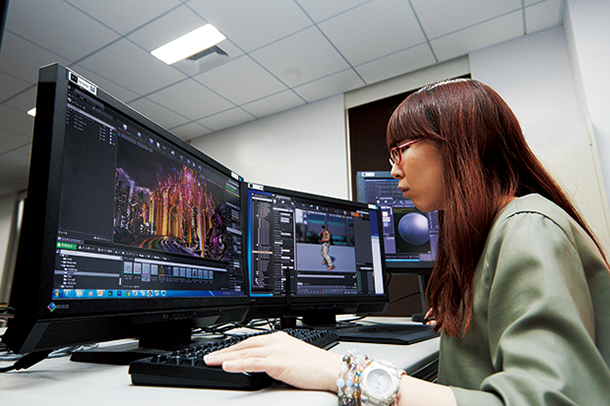
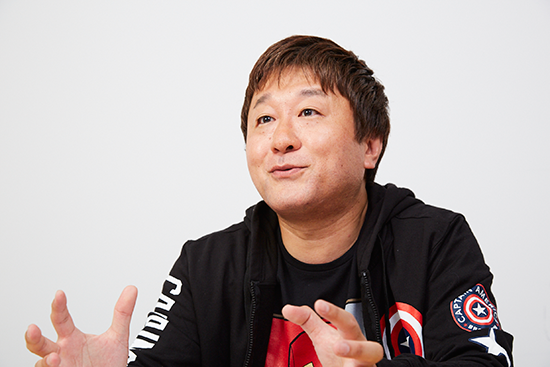
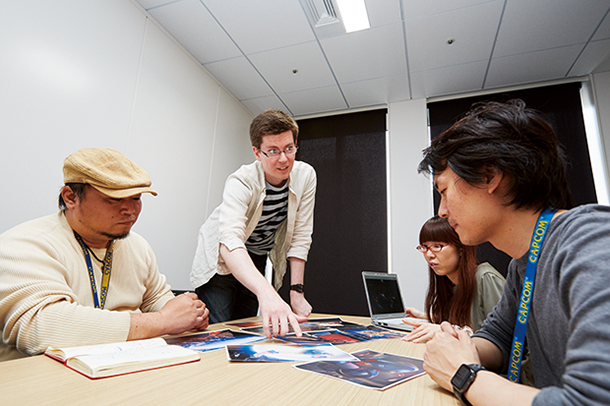
The impact of MARVEL VS. CAPCOM: INFINITE on the market
- Tell us about the current situation of the fighting game genre.
-
Fighting games have been said to be a “closed market,” and compared to the amount of buzz surrounding them, the number of players isn’t as high as you would think. The reason for this is that the genre sparks competitiveness: you square off against an opponent and think of how to defeat them. This demands
training. You have to put in the time to study the moves and master special techniques in order to win.
Core users who have been honing their skills day in, day out are overwhelmingly strong, so that newcomers don’t stand a chance; because of this, the genre becomes a “closed market,” only for a certain set of players, which is why compared to other genres it won’t see the same explosive growth in users.
However, with the popularity of play videos on YouTube and spectator-friendly eSports competitive gaming events, we’re seeing the rise of a new trend where newcomers can be entertained through watching. - Given that, what sort of position is MARVEL VS. CAPCOM: INFINITE aiming for? What are your ambitions for this game?
- On this title, we have pursued a satisfying competitive experience for core users, while providing less experienced users with a way to casually enjoy fighting games. We’ve made it with our continued support of eSports in mind, and moving ahead we eagerly anticipate players from the different segments bringing their enthusiasm and energy both as participants and as spectators. It’s the complete package, both for core and casual players; I hope everyone is looking forward to it.
